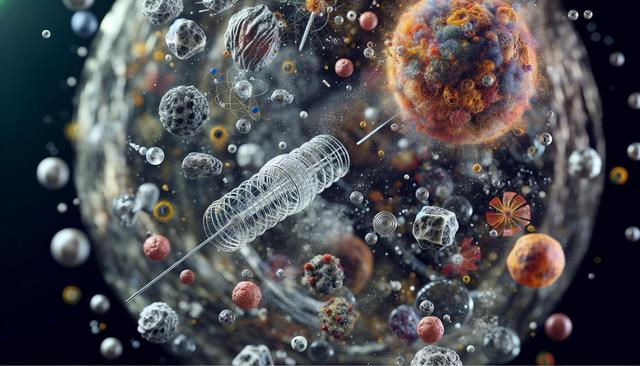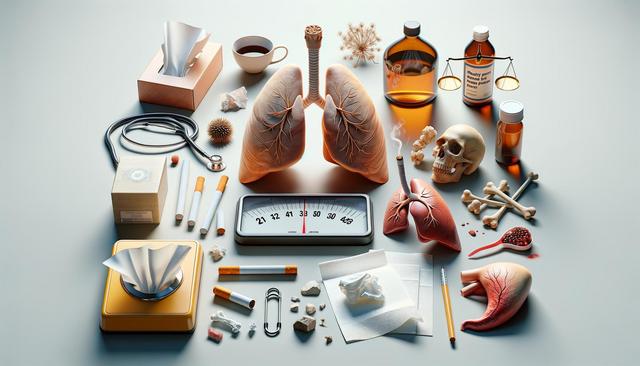Physical Side Effects After Surgery
Surgery for ductal carcinoma, whether it’s a lumpectomy or mastectomy, often leads to a number of physical side effects. These effects are usually temporary, but in some cases, they can persist and require ongoing management. Pain is one of the most immediate and noticeable side effects. Patients may experience soreness, tightness, or a sensation of pulling in the chest area. This discomfort can extend into the arm or shoulder, especially if lymph nodes are removed.
Another common issue is swelling, known as lymphedema, particularly when lymph nodes are affected. This can cause a heavy feeling in the arm, tight skin, and reduced mobility. To manage these symptoms, doctors may recommend:
- Physical therapy and arm exercises
- Compression garments
- Manual lymph drainage massage
Fatigue is another significant side effect that can impact daily activities. It’s often the result of the body’s healing process combined with emotional and mental stress. Rest, balanced nutrition, and light physical activity can aid in recovery and help manage this symptom.
Changes in Skin and Scarring
Following ductal carcinoma surgery, changes to the skin are very common. Depending on the type of surgery performed, individuals may notice bruising, numbness, or hypersensitivity around the incision site. Over time, most patients develop scars, which may appear raised or thickened, especially in the early stages of healing.
Some patients also experience skin tightness or puckering due to tissue removal. While cosmetic changes are often expected, they can still be emotionally challenging for many individuals. Supportive care options include:
- Silicone gel sheets to reduce scar appearance
- Moisturizing creams to soothe irritated skin
- Consultation with a plastic surgeon for possible reconstruction
Radiation therapy, often used in conjunction with surgery, can also lead to skin changes such as redness, peeling, and dryness. These effects usually resolve after treatment ends, but managing them during therapy is essential for comfort and overall skin health.
Emotional and Psychological Impact
Undergoing surgery for ductal carcinoma is not only a physical challenge but also an emotional one. Many individuals report feeling anxious, depressed, or emotionally overwhelmed after diagnosis and treatment. These feelings may stem from body image concerns, fear of recurrence, or the stress of navigating medical decisions.
Psychological support is a key component of recovery. It’s important to recognize that emotional well-being is just as critical as physical healing. Recommended resources include:
- Counseling or therapy with a mental health professional
- Joining a cancer support group
- Talking openly with family and friends
Developing coping strategies and addressing mental health early on can significantly improve one’s outlook and quality of life post-surgery. Mindfulness practices, meditation, and journaling have also been found helpful by many patients.
Long-Term Side Effects and Monitoring
While many side effects improve with time, some may become long-term or even permanent. Numbness in the chest area, changes in breast shape, and restricted arm movement can persist. Regular follow-up care is essential for monitoring these effects and ensuring overall health after surgery.
In rare cases, complications such as infection, seroma (fluid buildup), or delayed wound healing may occur. It’s important to report any unusual symptoms to your healthcare provider promptly. Continued surveillance often includes:
- Routine physical exams
- Imaging tests to detect recurrence
- Ongoing assessments of physical and emotional health
Staying informed and proactive about follow-up care helps patients feel more in control and supported during their recovery journey.
Rehabilitation and Lifestyle Adjustments
Recovery from ductal carcinoma surgery often includes a period of rehabilitation. This may involve physical therapy to regain strength and mobility, particularly in the upper body. Gentle stretching and resistance exercises can help prevent stiffness and improve circulation. Many individuals also benefit from lifestyle adjustments aimed at boosting overall well-being.
Nutrition plays a crucial role in healing. A balanced diet rich in fruits, vegetables, whole grains, and lean proteins supports tissue repair and energy levels. Staying hydrated and avoiding processed foods can also contribute to better outcomes.
Additionally, adopting a more structured daily routine — including sleep hygiene, stress management techniques, and regular physical activity — can support long-term health. Patients are encouraged to:
- Engage in low-impact exercises like walking or yoga
- Limit alcohol and avoid tobacco
- Stay connected with their care team for ongoing support
Rehabilitation is not just about physical recovery, but also about reclaiming independence and confidence after treatment. With the right strategies, many individuals can return to their regular activities and maintain a fulfilling lifestyle.
Conclusion: Supporting Recovery and Quality of Life
Surgery for ductal carcinoma brings a range of physical and emotional side effects, but being informed and prepared makes a significant difference. From managing pain and fatigue to addressing emotional well-being and long-term changes, each aspect of recovery plays a vital role in improving quality of life. By working closely with healthcare providers, exploring supportive care, and making gradual lifestyle adjustments, patients can navigate the healing process more comfortably and confidently. Empowering yourself with knowledge and access to resources is a powerful step toward recovery and resilience.


